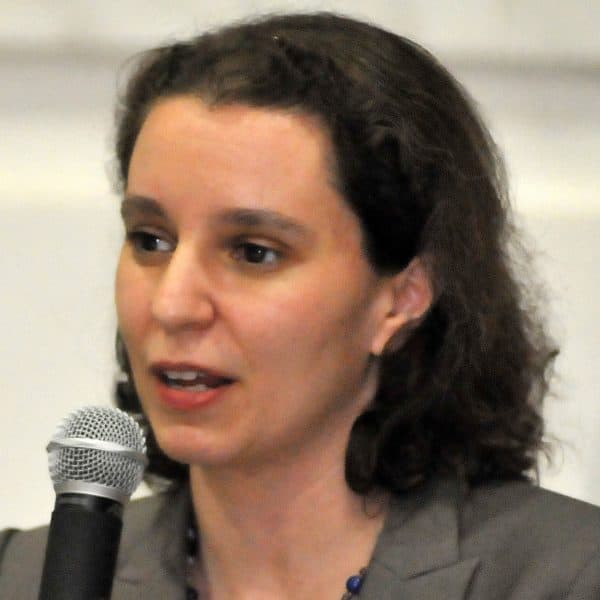Advertisement
The Day I Did Nothing

The woman in front of me in the supermarket checkout line had a little girl in the child seat of her shopping cart. The toddler, who was probably 2-years-old or so, was smiling and chattering like kids do.
“Shut up ass----,” the mother said.
She waved her fist in front of her child’s face. The girl’s eyes got wide and glassy. She made the whimpering sounds of a child who is about to cry but froze before any tears formed. The girl stared at her mother, not moving, barely breathing.
I stared down at my shopping cart, hyper-focused on the pasta, chocolate cookies and 2 percent milk that were the staples of my college student diet. I was working as an intern at a domestic violence program that summer. I probably had the phone number for child protective services in my backpack, but I didn’t call.
I probably had the phone number for child protective services in my backpack, but I didn’t call.
That summer changed me. The more I learned about domestic violence the more passionate I became about getting justice for survivors of abuse. My days were spent accompanying women to restraining order hearings. My nights and weekends were often spent getting into arguments with friends about song lyrics and music videos that I thought were misogynistic.
I felt more passionate about abuse prevention than I’d ever felt about anything, so why did I fail to act when I saw a mother threaten her child?
I was afraid of making the situation worse. Though I had worked as a domestic violence advocate for less than two months, I had already developed a distrust of the child protective system. What if the girl wound up with foster parents who sexually abused her? What if protective services did a home visit but didn’t follow up? Would the mother get angry and take that rage out on the girl?
I didn’t trust my judgment. I didn’t have children — so what did I know? I didn’t see the mother actually hit her daughter. Maybe I was so steeped in domestic violence that I read every conflict as abuse.
I didn’t think preventing abuse was possible. I couldn’t envision any way to help the girl (or the mother) that didn’t involve a government system about which I was ambivalent at best. I was saturated with stories of abuse, so overwhelmed I couldn’t sleep at night. But I understood abuse the way someone might understand an earthquake or hurricane — a devastating event I could do nothing to change. People were either abusers or not, and anybody who said they’d reformed was lying. The only choices that worldview gave me were to decide the mother was beyond redemption or discount the abusive behavior I’d seen. Since neither interpretation left me with any good options, I dismissed them both.
But these are only interpretations. Stories I’ve imposed on the events of a day long since past. The truth is when I saw that woman threaten her child, I literally froze. My decision not to intervene was not a decision at all. It was an inability to maintain my presence of mind.
This is part of the reason why, more than 20 years later, I work to prevent abuse by teaching self-defense. Classes I teach re-create assault scenarios with enough realism that participants react the way they would to an actual threat — their hearts race, their bodies produce adrenaline. Students practice protecting and advocating for themselves and others in response to physical intimidation and verbal harassment. As a teacher I rehearse the act of not freezing a few thousand times a year.
While there’s no perfect formula for what to do when you see a parent threaten a child, I’m fairly certain that if it happened today I wouldn’t freeze. I would instead approach the parent and express my concern, keeping my tone as respectful as I could. I would name the specific behavior I observed. (“I’m concerned that you called your daughter an ass----,” will go a lot farther than “You’re an abuser.”)
Advertisement
My decision not to intervene was not a decision at all. It was an inability to maintain my presence of mind.
I might offer information about community groups that make home visits and support stressed parents. It’s possible she’d respond by insulting me or telling me I didn’t know what I was talking about. But a surprising side effect of self-defense is that I’m much less rattled when people yell at me.
Also, I would likely call the Department of Children and Families. Because despite recent news of some serious failures, there are skilled and dedicated caseworkers who can help children in ways I can’t.
I will never know what happened to the girl I didn’t help. All I can do now is practice not freezing until it becomes as routine as brushing my teeth. That way I can stop treating abuse like a natural disaster and instead believe I’m capable of changing its course.
Related:
